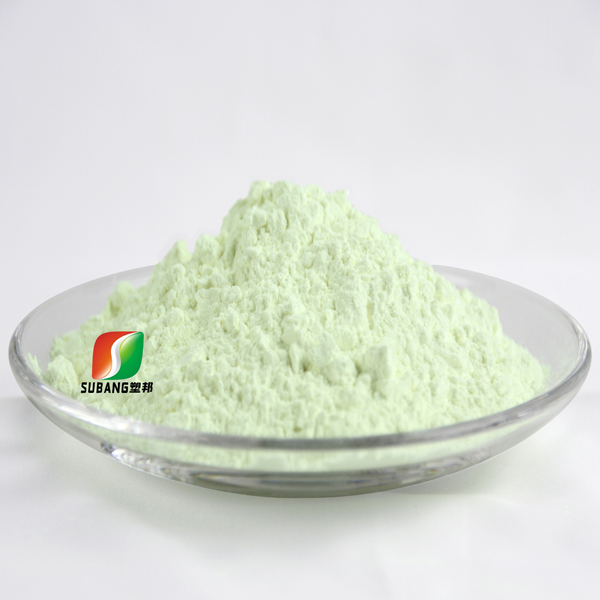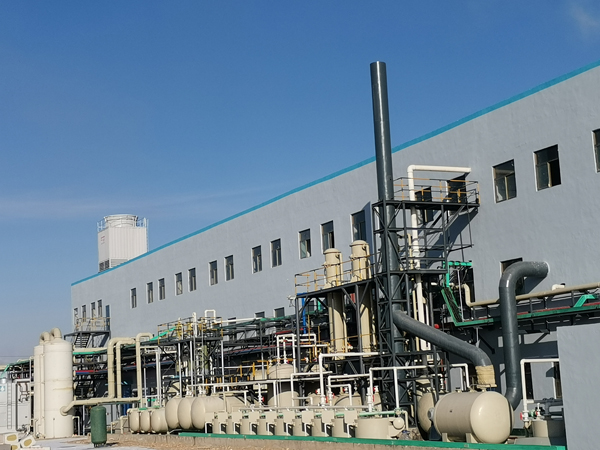Influence of Resin Stability
PVC resin is a heat-sensitive material, and there are many defects in its molecular structure, such as double bonds, allyl groups, residual initiator end groups, etc. According to the mechanism of free radicals, these defects are easily activated by heat and light to form free radicals. Under the action of free radicals, polyvinyl chloride undergoes dehydrochlorination and degradation according to a chain mechanism. The continuous dehydrochlorination reaction produces a polyene sequence of conjugated double bonds on the main chain of the polyvinyl chloride molecule, which is a chromogenic structure. As long as the number of conjugated double bonds reaches 5~7, polyvinyl chloride begins to Discoloration, when it exceeds 10, it turns yellow, the conjugated sequence continues to lengthen, and the color of polyvinyl chloride gradually deepens, and finally becomes brown or even black. Maintaining the stability of PVC at processing temperatures is the foundation of all toning and whitening work.
The effect of temperature
PVC plastic profiles are plasticized and formed at a temperature of 185~195 °C, and the heating time is as long as several minutes, which requires the pigments and brighteners used to have high thermal stability. For rutile titanium dioxide, its crystal structure is cube, Ti atoms and O atoms are closely arranged, the crystal structure is very stable, and it can still maintain the stability of structure and function under the processing temperature of PVC profiles; ultramarine is aluminum silicate. Sulfur-containing compounds, heat resistance is also very good. However, for fluorescent whitening agents, different types of fluorescent whitening agents also have differences in their heat resistance performance.
Acid effect
The PVC processing process is always accompanied by the decomposition of PVC molecules, and a large amount of hydrogen chloride is generated during the decomposition process. Hydrogen chloride gas at high temperature is highly corrosive and acidic. Among the above three materials, TiO2 has the highest acid corrosion resistance, followed by fluorescent whitening agents, and ultramarine blue is the worst (in an acidic environment, ultramarine blue changes from blue to off-white and produces the largest bubbles). The reason why ultramarine blue is still used in the profile formulation instead of phthalocyanine blue with better acid resistance is mainly because the tinting power of phthalocyanine blue is too strong, which is about 20~40 times that of ultramarine blue. The mixing capacity of the mixer, the addition amount of ultramarine blue in each ratio is only 5~20g. If it is replaced with phthalocyanine blue, the addition amount is very small, and the measurement error is very large, which will cause batches of profiles to appear. Serious chromatic aberration.
The effect of adjuvants
The production equipment and technology of PVC plastic profiles in my country are mainly imported from Europe and the United States. There is still a certain amount of lead in it. The sulfur contained in the ultramarine blue may interact with the lead in the stabilizer, resulting in black lead sulfide polluted profiles.
The effect of brightener dosage
Titanium dioxide is the basis for toning and whitening of white PVC profiles. As the amount of titanium dioxide increases, the whiteness of the product increases.
In addition, as the main UV shielding agent in the formulation of profiled materials, the dosage of titanium dioxide also has certain requirements. Generally speaking, the dosage of titanium dioxide should reach 4~8phr.
Ultramarine blue is used to “cover yellow” to achieve the purpose of whitening. If the dosage is too small, the whitening effect is not good. If the dosage is too large, it is easy to make the profiled material appear blue and generate more lead sulfide, which affects the surface gloss of the profiled material. Therefore, its dosage is usually controlled to be about 0.5% of the dosage of titanium dioxide.
Fluorescent whitening agents can effectively absorb ultraviolet rays of a certain wavelength and emit them in the form of visible light. With the increase of the amount of fluorescent whitening agent, the whiteness of the product increases; but when the fluorescent whitening agent reaches a certain concentration, continuing to increase the amount has no significant effect on the whiteness of PVC profiles, and sometimes it decreases, and the amount is larger. The influence on the processing performance and physical and mechanical properties of the profiled material must be considered.
Post time: Mar-26-2022



